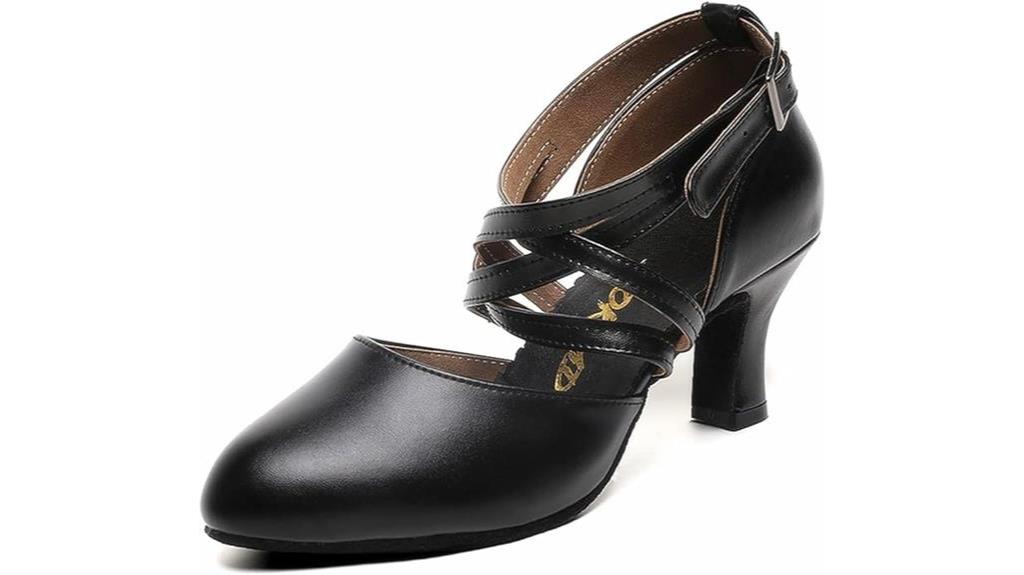The waltz is one of the oldest dances that are still popular today. It’s a graceful, fluid dance that is perfect for social occasions.
This post will teach you the basics if you’re new to waltzing. We’ll cover the history of the waltz, how to do the basic steps, and some tips for improving your technique. Read on to learn more!
What is The Waltz Dance?
The Waltz Dance is a ballroom dance in triple time, performed to Waltz music or Viennese waltz music. It is characterized by grace, fluidity, and ease of movement.
The Waltz Dance originated in the late eighteenth century and was popularized in the early nineteenth century.
It quickly became one of the most popular ballroom dances in the world. Today, it remains a popular dance form and is often danced at social events and weddings.
The Waltz is danced traveling in triple time as they turn together counterclockwise around the line of dance.
Returning to the dance’s origins, the Waltz got its name from the word “walzen,” which suggests “to turn” in German.
In DanceSport, it belongs to the American-Smooth classification, consisting of foxtrot, Viennese Waltz, and tango.
Its Characterized by its “rise and fall” action.
The Waltz consists of a step, slide, and step in 3/4 time.
It ended up being the ballroom dance par quality of the 19th century and kept its appeal in the 20th.
This dance’s appeal spread throughout the Old World and motivated its leading artists:
- Beethoven
- Mozart
- Hayden
- and specifically, Strauss.
The Waltz is among the most prominent dances that were first danced in contemporary Germany and Austria between the 18th and 13th centuries.
The Waltz was danced in many styles and variations throughout its long history.
Here are a few of the most popular:
Contemporary Ballroom Dance (Viennese Waltz)
The Viennese Waltz is the earliest kind of ballroom dance. It emerged in the 18th century around 1750.
Due to its fast rotations and close hold, Waltz used to be called the “Forbidden Dance.”
Viennese Waltz was established more straight from the Landler, the Deutscher, the Dreher, and the Schleifer.
These were regional folk dances in Bavaria and Austria in the 18th century.
Their character changed when those living in the cities embraced these dances.
They changed both musically along in the choreography.
The dance’s pace ended up being much quicker, and the graceful gliding changed the popular hopping motion of the folk dances.
The dance moved from the country dance halls to upper-class ballrooms, and the Viennese Waltz was born.
International Standard Waltz
In some cases, called the English Waltz, the International Waltz is danced specifically in the closed dance position.
It is slower than many of the other kinds of this dance.
This design was greatly codified for competitors and dancesport.
It is popular with competitors worldwide.
The International style waltz is danced in the United Kingdom and Europe.
American Style Waltz
The American style Waltz was established from the initial Viennese style by dance studios and dancers in the United States.
The American style utilized a slower pace than the initial Viennese.
Also, due to the slow tempo, it has more rise and fall.
The Mexican Waltz
This beautiful dance quickly discovered its way throughout the Atlantic and arrived at the late 19th-century Mexican upper class’s fertile ground.
In such an environment, this popular type of ballroom dancing, with its light beat and brilliance, quickly ended up being related to the elegance that surrounded Mexican upper classes throughout the Porfirio Diaz age (1876-1911).
Like polkas, mazurkas, and the Spanish chotis popular in Europe, the Waltz was embraced and changed by Mexicans to show vigor and a level of sensitivity.
In Mexico, this lively European dance obtained a melancholy that became a cultural symbol.
The Valse Musette
Bal-musette is a French dance and music style that initially ended up being popular in Paris in the 1880s.
It started with bagpipes as the primary instrument, and this instrument was changed to the accordion.
The pace of such a Waltz could be sensual and slow or extremely quick.
It was usually too quick for most dancers to do a Victorian-style rotary Waltz or 20th Century design box-step.
While moderate and slow-pace waltzes are discovered in the Jazz Age French collection, the most regular pace is rapid.
This pace Gives the dancers the option to spin like tops or go slow and keep it mellow and calm.
The hold in such a Waltz is exceptionally close.
They can be in a basically “basic” hold. The man can have both hands behind his partner’s back, or one hand on her back and the other at his side.
Likewise, the man might hold his left (his partner’s right) hand to his chest to emphasize the embrace.
The Cross-Step Waltz (French Valse Boston)
Cross-step Waltz (initially the French Valse Boston) is a social ballroom dance count in triple time.
Its Performed mainly in a closed position, to slower pace waltz music (around 110 to 120 beats per minute).
It is identified by a “main cross-step” where the Lead function crosses the right foot over the left, as the Follow function crosses the left foot over the right on the very first count of the musical procedure.
Cross-step Waltz can turn and travel like standard waltzes, while the cross-step helps with many travel variations.
What is the Waltz Dance Summary
Now that you know some of the basics of waltzing, it’s time to put your new skills to the test!
Grab a partner and head out to your next social event. Waltzing is sure to make you the life of the party.
Have fun, and be sure to practice at home so you can perfect your technique. Thanks for reading!




